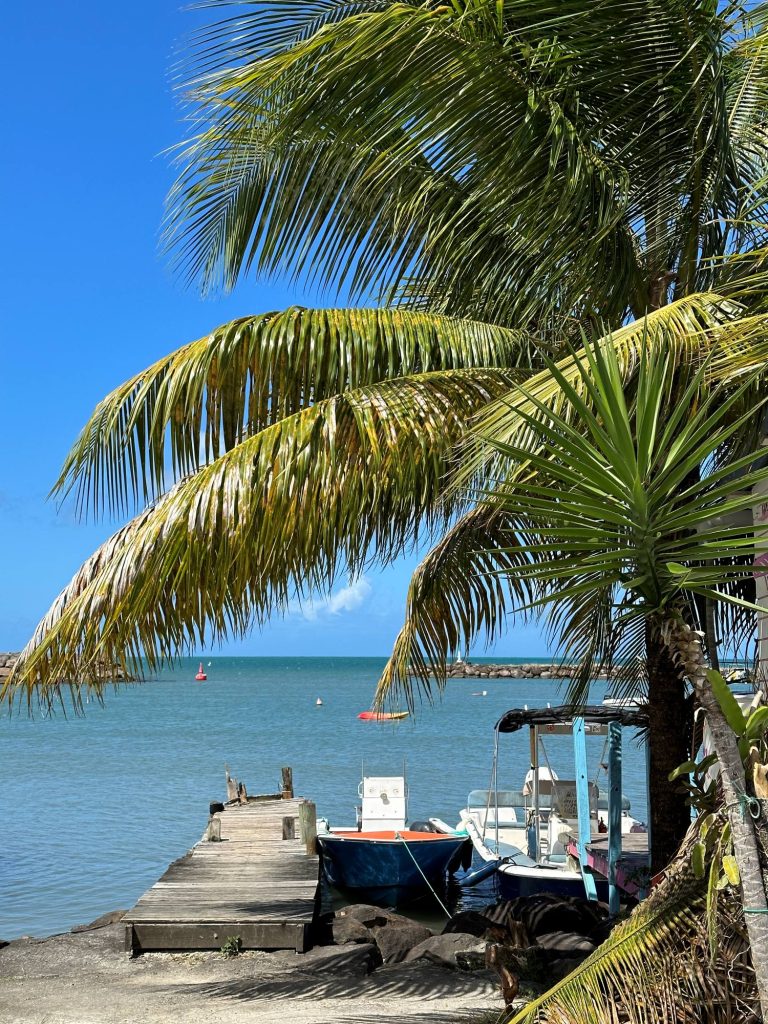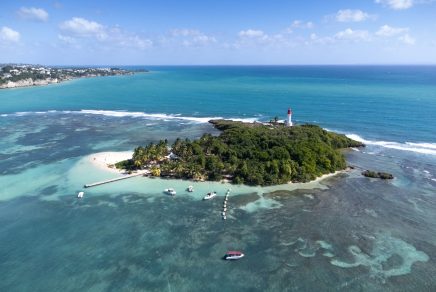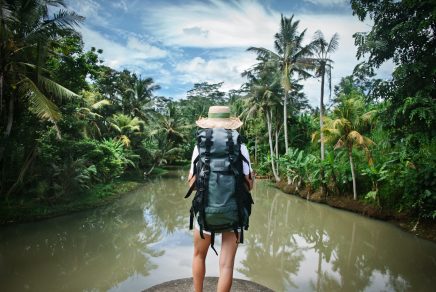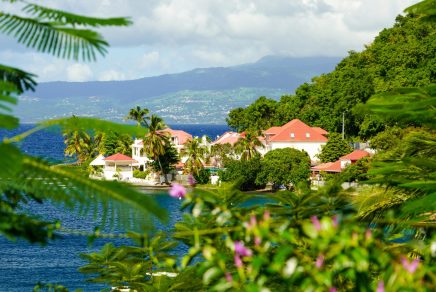Welcome to the submerged treasures of the Caribbean! When it comes to exploring the ethereal world beneath the waves, these dive sites in Guadeloupe offer some of the most breathtaking underwater experiences. From the mystical dance of colorful fishes to the historical wrecks resting on the ocean floor, each dive spot in this tropical paradise tells its own unique story.
Spanning an impressive 240 kilometers of pristine coastline, Guadeloupe presents an abundance of diving opportunities across 20 diverse dive sites. In fact, the islands of Guadeloupe have the largest coral and most diverse reef in the Lesser Antilles: 29 kilometers, to be precise, home to almost 60 species of coral, sponges and gorgonians. The waters here are predominantly tranquil, boasting an abundance of healthy coral reefs. Additionally, the government’s stringent protective measures ensure the preservation of these serene waters, making it an ideal destination for divers.
How to prepare for a diving excursion in Guadeloupe
What is the best time of year for diving in Guadeloupe?
The peak months of the dry season from mid-February to mid-August are particularly appealing due to the calm and dry weather conditions. The average temperatures range between 25°C (77°F) and 30°C (86°F), providing a comfortable environment both in and out of the water. Note that the rainy season that runs from mid-August to mid-February could potentially impact visibility under water due to heavy rainfall, so it’s crucial to check the forecast before planning your diving excursion.
Do I need certification for scuba diving in Guadeloupe?
Yes, you do need certification for scuba diving in Guadeloupe. The certification process ensures that divers are well-equipped with the necessary knowledge and skills to dive safely. The most common certification is the PADI (Professional Association of Diving Instructors) Open Water Diver certification.
Are there English-speaking PADI-certified diving centers in Guadeloupe?
As a French territory, French is obviously the national language of the islands. French, not English, is spoken by most instructors and divemasters. This is not going to be a problem underwater, as the signals used in diving are universal. However, if you do not speak any French, this may not be the best place to go to get certified as a beginner Open Water Diver.
What marine life can I expect to see while diving in Guadeloupe?
Guadeloupe’s waters are home to some 250 species of fish and other living creatures that depend directly on the coral reef. Among the species most likely to be seen on a dive are:
- Green turtle
- Angel fish
- Clown fish
- Blue surgeon fish
- Blue gorette fish
- Pyjama butterfly fish
- Colas fish
- Yellow captain fish
- Blue-headed girelle fish
- Black sea urchin
- Sleeper sharks
Why are most Guadeeloupe dive sites near Réserve Cousteau and Pigeon Island?
Guadeloupe’s acclaim as a premier diving destination, particularly on Basse-Terre island, largely stems from Jacques Cousteau’s endorsement. He not only dubbed it one of the world’s finest dive spots but also passionately advocated for its conservation. His fascination was so profound that he filmed parts of “Le Monde du Silence” in its waters in 1956. Today, these waters host the renowned Cousteau Underwater Reserve. Situated on the western coast of Basse-Terre, this marine sanctuary is peppered with numerous dive sites and is rigorously protected by government regulations prohibiting anchorage to safeguard its vibrant marine life. The island’s steep terrain offers a dynamic diving experience suitable for all skill levels.

The best dive sites in Guadeloupe
La grotte aux barracudas, Grande-Terre
The Barracuda Cave, nnear Port-Louis, is one of the top dive sites in Guadeloupe. Beware, however, as it is reserved for experienced level 2 divers due to the sometimes narrow natural walls.
This enchanting blue cavern offers exceptional visibility down to 10 meters and is home to numerous barracudas. Its luminescent waters and serene surroundings make it an unforgettable site for underwater adventure enthusiasts.
Sec Pate, Les Saintes
Sec Pate is a haven for advanced divers, offering a thrilling challenge with its ever-present, often strong currents. It is located in the channel off the Saintes archipelago.
The site’s underwater pinnacles, invisible from the surface, resemble an assembly of witches’ hats and provide a unique landscape widely regarded as one of the premier diving experiences in the Caribbean. Here you’ll find many of the large pelagic fish of the open Atlantic, as well as colorful coral specimens.
Grand Cul-de-Sac Marin, Basse-Terre
Between Grande-Terre and Basse-Terre lies the Grand Cul-de-Sac Marin, a vast 15,000-hectare nature reserve and one of Guadeloupe’s most important diving sites.
Its 29 kilometers of coral reefs, rich in seagrass beds and mangroves, contribute to the ecological diversity of the area. It’s a great place for diving, and you’ll see some very red starfish. The angelfish population is particularly rich, moving in huge, dense schools. Truly impressive!
Most departures take place from the small Sainte-Rose marina.
Jardin Japonais, Basse-Terre
Another of the dive sites in the Cousteau Reserve! Off the coast of Basse-Terre is the Jardin Japonais. Renowned for its colorful corals and myriad tropical fish, it can reach depths of up to 25 meters. It is home to a small grotto containing less delicate fauna, such as limpets, fan gorgonians and sponges, as well as eye-poppingly colorful corals.
Le Franjack, Basse-Terre
The Franjack, a wreck deliberately sunk in 1996, now serves as an artificial reef teeming with life. One of Guadeloupe’s three main shipwrecks, it lies at a depth of 20 meters, just a stone’s throw from Malendure beach.
It is 50 meters long and came to rest on its keel after the passage of tropical storm Berta. Open to divers of all levels, it is an underwater museum featuring a wide variety of fish, sponges and coral, marking its place among Guadeloupe’s emblematic dive sites.
Pointe Carangue, Basse-Terre
With crystal-clear visibility from 10 to 30 meters, Pointe Carangue is an inviting site for all types of divers. It is located close to Petit Ilet and can be visited as an extension to a dive at nearby La Piscine.
Le Jardin de Corail, Basse-Terre
Nestled in the Cousteau reserve, the Coral Garden is a majestic underwater kingdom. Numerous species come here to reproduce, and it’s not uncommon to come across seahorses! It is accessible to divers of all levels, from just a few meters below the surface. The site is also famous for the iconic Cousteau statue, which stands guard among the sand at a depth of 12 metres.
The Aquarium, Basse-Terre
The Aquarium is an idyllic spot for beginners. Situated in a cove near the ilets Pigeon, it is protected from the swell of the Caribbean Sea. This gives it a calmer character for first dives some ten meters underwater. It follows a gently sloping coral reef, rich in marine life. This living tapestry is home to a wide variety of fish, sea turtles and bright gorgonians, making it one of Guadeloupe’s most popular dive sites.
La Piscine, Basse-Terre
La Piscine is an ideal location for scuba diving training, thanks to its shallow depth and pool-like conditions. It is surrounded by the Ilets Pigeon, which protects it from currents. It can be reached by group scuba diving or individual kayak excursions departing from Malendure beach.
Its white sandy bottom and proximity to coral reefs make it ideal for beginner divers, who can discover the wonders of the ocean without venturing into the depths.








